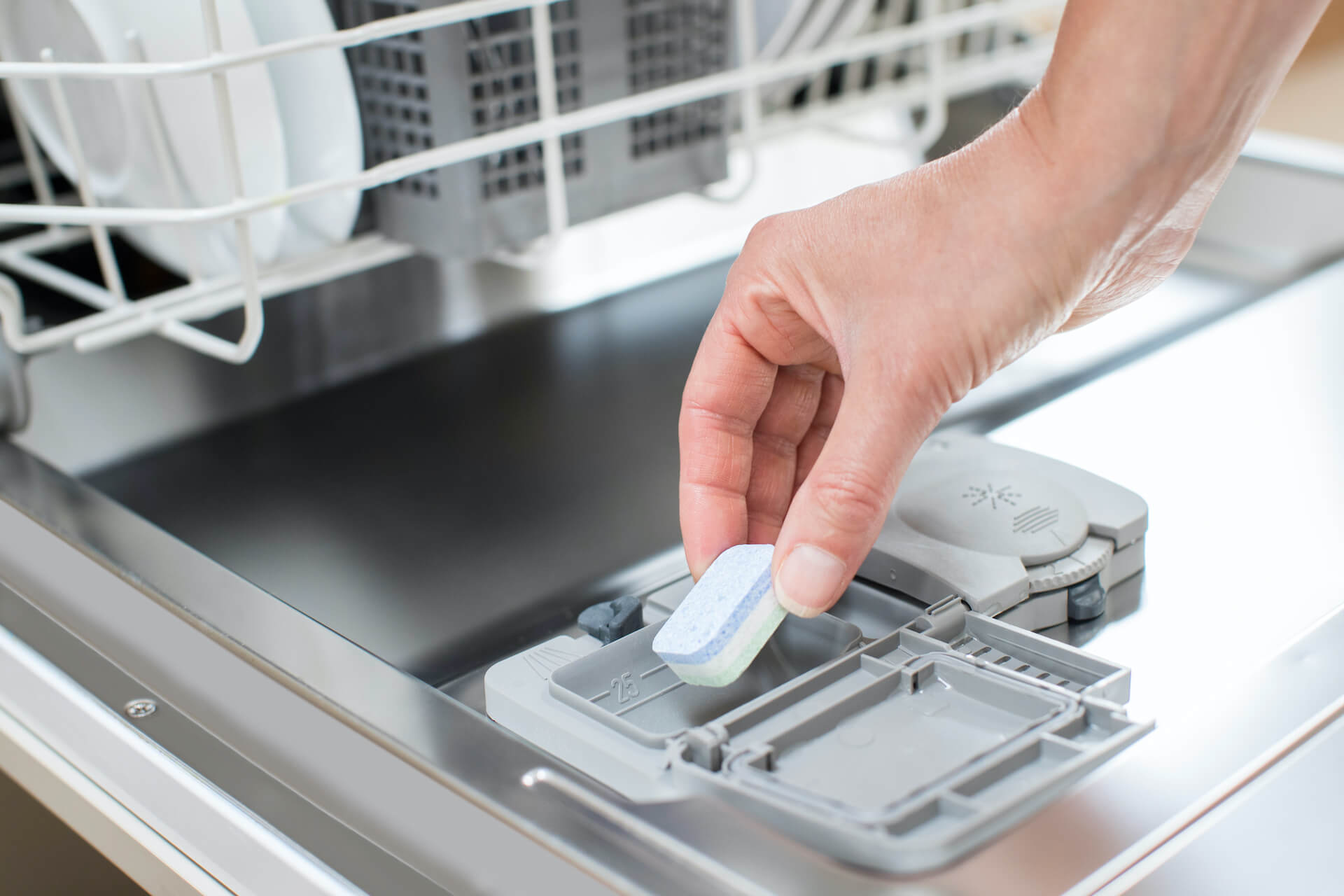

Articles
How To Use The Dishwasher
Modified: May 6, 2024
Learn how to use the dishwasher with these informative articles. Discover tips, tricks, and maintenance advice for efficient dishwashing.
(Many of the links in this article redirect to a specific reviewed product. Your purchase of these products through affiliate links helps to generate commission for Storables.com, at no extra cost. Learn more)
How To Use The Dishwasher
Using a dishwasher can make cleaning up after meals much easier and more efficient. If you’ve never used a dishwasher before or if you’re unsure of how to properly use one, don’t worry. In this article, we’ll walk you through the steps on how to use the dishwasher effectively.
Read more: How To Use Hotpoint Dishwasher
Step 1: Preparing the dishwasher
Before you start using the dishwasher, make sure to check for any leftover dishes in the machine. Remove any large food particles from the dishes and scrape them into the garbage bin. This will help prevent clogging and ensure a more efficient cleaning process.
Next, ensure that the utensil rack and dishwasher basket are properly loaded. Place silverware and utensils in the utensil rack, making sure to separate them to allow for better water circulation. Load plates, bowls, and cookware in the dishwasher basket, facing the spray arm for a thorough cleaning.
Step 2: Adding detergent
Select the appropriate dishwasher detergent for your machine. Refer to the manufacturer’s instructions to ensure you’re using the correct type and amount of detergent. Measure the detergent according to the guidelines and add it to the designated detergent dispenser in the dishwasher.
Step 3: Choosing the appropriate wash cycle
Most dishwashers offer a variety of wash cycle options, including normal, heavy-duty, quick wash, and more. Take a moment to familiarize yourself with the different wash cycles available on your dishwasher. Consider the level of dirtiness on your dishes and choose a cycle that suits your needs.
Step 4: Adjusting the settings
Some dishwashers allow you to adjust the temperature settings. If you have delicate or heat-sensitive items, consider selecting a lower temperature setting. Additionally, check if your dishwasher offers additional options such as sanitize or delay start. Make the necessary adjustments based on your preferences and needs.
Read more: How To Use Samsung Dishwasher
Step 5: Loading the dishwasher
When loading the dishwasher, organize the dishes and cookware properly. Place larger items such as plates and pots on the bottom rack, leaving space between each item for optimal water circulation. Smaller items like glasses and cups should be placed securely on the top rack.
Avoid overcrowding the dishwasher, as this can hinder the effectiveness of the cleaning process. Make sure there is enough space between items to allow water and detergent to reach each dish.
Step 6: Starting the dishwasher
Once you have finished loading the dishwasher, securely close the dishwasher door. Make sure it latches properly to avoid any leaks during the washing process. Select the desired wash cycle and start the dishwasher. The machine will now begin its cleaning process, spraying water and detergent to thoroughly clean your dishes.
Step 7: Unloading the dishwasher
After the dishwasher has completed its cycle, it’s important to let the dishes cool down for a few minutes before unloading. This will not only prevent burns but also allow the dishes to dry completely. Carefully remove the dishes from the dishwasher, starting with the top rack and working your way down. Store the cleaned dishes in their designated places.
With these simple steps, you can easily and effectively use your dishwasher to streamline your daily cleanup routine. Enjoy the convenience of a sparkling clean kitchen with minimal effort!
How To Use The Dishwasher
Read more: How To Use A Frigidaire Dishwasher
Introduction
Using a dishwasher can be a lifesaver when it comes to cleaning up after meals. It not only saves you time and effort but also ensures that your dishes are thoroughly cleaned and sanitized. However, if you’ve never used a dishwasher before or if you’re unsure of how to maximize its potential, this guide will walk you through the steps of using a dishwasher effectively.
A dishwasher works by spraying hot water and detergent onto your dishes while they are securely placed in various racks. The water temperature, wash cycles, and detergent selection can all be customized to suit your needs. By understanding how to properly load the dishwasher, select the right settings, and choose the appropriate detergent, you can achieve spotlessly clean dishes every time.
Whether you’re a new dishwasher owner, just moved into a new home with a dishwasher, or simply want to improve your dishwashing skills, this article will break down the process into easy-to-follow steps. From preparing the dishwasher and loading the dishes to selecting the wash cycle and starting the machine, we’ll cover everything you need to know.
In order to get the best results from your dishwasher, it’s important to understand the different components and functionalities of the machine. By properly prepping the dishwasher before each use, you can ensure that it is free from any leftover food particles that could interfere with the cleaning process. Additionally, correctly loading the dishwasher and selecting the appropriate wash cycle will help optimize the cleaning efficiency.
While the steps may vary slightly depending on the model and brand of your dishwasher, the basic principles remain the same. By following the guidelines provided in this article, you can confidently use your dishwasher and enjoy clean dishes with minimal effort.
So let’s get started and discover the proper techniques and tips on how to use your dishwasher to its full potential. By the end of this guide, you’ll be a pro at using the dishwasher and making your dishwashing routine a breeze.
How To Use The Dishwasher
Read more: How To Use Hotpoint Dishwasher
Step 1: Preparing the dishwasher
Before you start using the dishwasher, it’s important to ensure that it is properly prepared for a successful cleaning cycle. This includes checking for any leftover dishes from previous meals and ensuring that the dishwasher is free from any large food particles. Here’s how to prepare the dishwasher effectively:
First, open the dishwasher door and carefully inspect the interior. Look for any dishes, glasses, or utensils that may have been left behind from previous meals. Remove these items and place them in the sink or on the kitchen counter for manual washing later. It’s crucial to start with an empty dishwasher to ensure optimal cleaning performance.
Next, take a closer look at the dishes you’re about to load into the dishwasher. Make sure to remove any large food particles, such as leftover scraps or chunks of food. These particles can clog the dishwasher’s drain and interfere with the cleaning process.
To remove the food particles, you can simply swipe them off the dishes with a utensil or rinse the dishes under running water. This step will help prevent clogs and ensure that your dishes come out sparkling clean after the wash cycle.
Once you have checked and cleaned the dishes, it’s time to move on to loading the dishwasher. Start by focusing on the utensil rack and dishwasher basket.
For the utensil rack, place your silverware, such as forks, knives, and spoons, into their designated slots. Make sure to separate them to allow for better water circulation and to prevent any items from nesting inside each other. If your dishwasher has a removable utensil basket, it can be used for larger utensils or additional silverware. Load the basket with the utensils, ensuring that they are evenly distributed.
Moving on to the dishwasher basket, arrange your plates, bowls, and cookware in a way that allows for optimal cleaning. Place larger items, such as plates and cutting boards, on the bottom rack facing towards the spray arm. This ensures that they receive a thorough spray of water during the cleaning process.
For the top rack, load glasses, cups, and smaller items. Align them securely, making sure not to overcrowd the rack. It’s important to provide enough spacing between the dishes to allow water and detergent to reach each item effectively.
By properly preparing the dishwasher and loading the dishes correctly, you can ensure that your dishes are ready for a thorough cleaning cycle. Take the time to check for any leftover dishes, remove large food particles, and organize the utensil rack and dishwasher basket. These simple steps will set the stage for a successful dishwashing experience.
How To Use The Dishwasher
Step 2: Adding detergent
Once you have prepared the dishwasher and loaded the dishes, the next step is to add detergent to ensure a powerful and effective cleaning cycle. Here’s how to add detergent properly:
Start by selecting the right dishwasher detergent for your machine. There are various types of detergents available, including powder, gel, and tablet forms. Read the manufacturer’s instructions or check the recommendations provided with your dishwasher to choose the most suitable detergent.
Once you have chosen the detergent, it’s time to measure and add the appropriate amount. Each detergent may have specific instructions on the packaging regarding the recommended dosage. It’s important to follow these instructions to ensure maximum cleaning performance and to avoid any detergent residue on your dishes.
For powdered detergents, use a measuring scoop or spoon to dispense the required amount into the designated detergent dispenser. Make sure not to overfill the dispenser, as this can result in excessive sudsing and poor cleaning results.
If you’re using a liquid or gel detergent, locate the detergent dispenser in your dishwasher. This is usually located on the inside of the dishwasher door or on the side of the upper rack. Squeeze or pour the recommended amount of liquid or gel detergent into the dispenser. Be careful not to spill or overfill it, as this can lead to detergent residue on your dishes.
If you’re using dishwasher detergent tablets or pods, simply place one tablet or pod into the designated compartment in the dishwasher. The heat and water from the dishwasher will dissolve the tablet, releasing the detergent during the wash cycle.
It’s important to note that using too much detergent can lead to excessive sudsing and may leave a residue on your dishes. On the other hand, using too little detergent may result in inadequate cleaning. Follow the manufacturer’s recommendations for the proper amount of detergent to use based on factors such as water hardness and the level of dirt on your dishes.
After adding the detergent, securely close the detergent dispenser or the dishwasher door, depending on your dishwasher’s design. This ensures that the detergent is contained and properly dispensed during the wash cycle.
By selecting the right dishwasher detergent and measuring the appropriate amount, you can ensure that your dishes are thoroughly cleaned and free of any residue. Attention to detail in this step will help optimize the cleaning performance of your dishwasher and leave your dishes sparkling clean after each cycle.
How To Use The Dishwasher
Step 3: Choosing the appropriate wash cycle
Choosing the right wash cycle is crucial for achieving optimal cleaning results with your dishwasher. Different dishwashers offer a variety of wash cycle options to accommodate different types of loads. Here’s how to select the suitable wash cycle for your dishes:
Start by understanding the different wash cycle options available on your dishwasher. Most dishwashers offer basic cycles such as “Normal,” “Heavy-Duty,” “Light,” or “Quick Wash.” Additionally, some models may have specialized cycles like “Pots and Pans,” “Eco,” or “Sanitize.” Refer to your dishwasher’s user manual or control panel display to familiarize yourself with the available options.
Each wash cycle is designed to tackle specific types of loads and levels of cleanliness. For example, a “Normal” cycle is suitable for everyday dishwashing needs, while a “Heavy-Duty” cycle is more effective for heavily soiled dishes and cookware. The “Quick Wash” cycle is ideal for lightly soiled dishes that need a fast clean.
Consider the level of dirtiness on your dishes when selecting the wash cycle. If you have lightly soiled dishes with minimal food residue, a shorter and less intensive cycle may be sufficient. For greasy or heavily soiled items, opt for longer and more thorough cycles to ensure thorough cleaning.
Take note of any specialized cycles on your dishwasher. For example, an “Eco” cycle uses less water and energy, making it an environmentally friendly option. A “Sanitize” cycle provides an extra level of hygiene by using high temperatures to kill bacteria and germs effectively.
In addition to the wash cycle options, some dishwashers offer additional customization features. These may include adjusting water temperature, selecting a rinse or hold cycle, or activating a delay start timer. Take advantage of these additional settings to tailor the wash cycle to your specific needs.
When selecting the wash cycle, keep in mind the load size and type. Delicate or fragile items may require a gentler wash cycle, while heavily soiled pots and pans may need a more intensive cycle. Some dishwashers have sensors that can detect the level of dirtiness and adjust the cycle automatically, ensuring optimal cleaning performance.
Once you have determined the appropriate wash cycle, use the dishwasher’s control panel to make your selection. This may involve pressing buttons, turning knobs, or using a touch screen interface. Follow the instructions on your dishwasher’s display or user manual to activate the chosen wash cycle.
Choosing the right wash cycle ensures that your dishes are cleaned effectively while conserving energy and water. By understanding the different wash cycle options available and selecting the suitable cycle for your load, you can achieve sparkling clean dishes with every use of your dishwasher.
How To Use The Dishwasher
Step 4: Adjusting the settings
Once you have selected the appropriate wash cycle for your dishes, it’s time to adjust the settings on your dishwasher to further customize the cleaning process. Here’s how to make adjustments to the settings:
Start by assessing the temperature settings on your dishwasher. Most dishwashers offer options for adjusting the water temperature. Higher water temperatures generally result in more effective cleaning, especially for greasy or heavily soiled dishes. However, delicate or heat-sensitive items may require lower temperature settings to avoid damage.
Refer to your dishwasher’s user manual or control panel display to understand the available temperature settings and their recommended uses. If your dishwasher has a designated temperature adjustment feature, use the controls provided to set the desired temperature. Make sure to consider the types of items in your load and their specific temperature requirements.
In addition to temperature settings, some dishwashers offer extra options that can enhance the cleaning process. One common option is the “Sanitize” feature, which uses high water temperatures to kill bacteria and eliminate germs effectively. This is particularly useful for baby bottles, cutting boards, and other items that require a higher level of hygiene. If your dishwasher has a “Sanitize” option, consider activating it for a germ-free wash.
Another option to look out for is the delay start timer. This feature allows you to set a specific time for the dishwasher to automatically start its wash cycle. This can be beneficial if you want the dishwasher to start operating during off-peak hours, when energy costs may be lower, or if you prefer to have the cycle finish at a specific time. Simply program the delay start timer according to your preference, and the dishwasher will begin its cycle accordingly.
If your dishwasher offers additional settings or options that are not covered here, refer to the user manual or control panel display for detailed information on their usage and benefits. Take advantage of these features to further customize the cleaning process to suit your needs.
Once you have adjusted the settings to your desired preferences, double-check your selections on the dishwasher’s control panel or display. Ensure that the temperature settings, additional options like sanitize or delay start, and any other customizable settings have been correctly configured before proceeding to the next step.
By adjusting the temperature settings and utilizing additional options like sanitize or delay start, if available on your dishwasher, you can optimize the cleaning process and meet the specific requirements of your load. Properly customizing the settings ensures that your dishes are cleaned effectively while considering factors such as temperature sensitivity, hygiene, and convenience.
How To Use The Dishwasher
Read more: How To Use Samsung Dishwasher
Step 5: Loading the dishwasher
Loading the dishwasher properly is essential for an efficient and effective cleaning cycle. Here’s how to organize your dishes and cookware in a way that ensures thorough cleaning and avoids any potential issues:
Start by organizing your dishes and cookware properly within the dishwasher. It’s important to place items strategically to maximize water circulation and optimize cleaning performance.
Begin by loading larger items such as plates, bowls, and cutting boards on the bottom rack of the dishwasher. Make sure these items are positioned facing the spray arm to allow for optimal water coverage. Position them in a way that allows water to reach all surfaces for a thorough clean.
Next, load smaller items such as glasses, cups, and mugs on the top rack. Place these items securely and consider spacing them out to avoid any potential contact during the cleaning process. It’s important to leave sufficient gaps between items to allow water and detergent to reach every piece effectively.
When loading silverware and utensils, use the designated utensil rack or basket. Separate different types of utensils to prevent nesting, which can hinder the cleaning process. Place forks, knives, and spoons in their respective compartments, ensuring that they are evenly distributed for thorough cleaning.
To ensure that there is enough space for water and detergent to reach all items in the dishwasher, avoid overcrowding the racks. Overloading can lead to inadequate cleaning and may result in dishes not being properly washed. Allow for a comfortable gap between items, ensuring that they are not touching or blocking each other.
Additionally, take note of any specific instructions or recommendations provided by the dishwasher manufacturer in the user manual. Some models may have specific loading instructions for certain items, such as stemware or delicate china. Adhering to these guidelines can help prevent damage and ensure the best possible cleaning outcome.
Remember to load items securely to prevent them from moving around during the wash cycle. Dishes that bump into each other can lead to chipping or breakage, so it’s important to position them properly within the dishwasher.
By organizing your dishes and cookware correctly and ensuring sufficient spacing between items, you can maximize the efficiency and effectiveness of the cleaning process. Proper loading allows water and detergent to reach all surfaces and ensures that your dishes come out sparkling clean after each wash cycle.
How To Use The Dishwasher
Step 6: Starting the dishwasher
After you have loaded the dishwasher with your dishes and properly organized everything, it’s time to start the wash cycle. To do this, follow these simple steps:
Begin by closing the dishwasher door securely. Gently push the door until it clicks or latches into place. Ensuring that the door is closed properly is crucial for the proper functioning of the dishwasher. An improperly closed door can result in water leakage and interrupt the cleaning process.
Once the dishwasher door is securely closed, it’s time to initiate the wash cycle. Locate the control panel or display on your dishwasher. It might be located on the top edge of the door, on the front panel, or on the control console. Depending on the model, you may have buttons, knobs, or a touch screen to select the wash cycle.
Review the available wash cycles on your dishwasher’s control panel or display. Choose the appropriate wash cycle that you have determined to be the best fit for your load. This could be a normal wash, quick wash, heavy-duty wash, or any other specialized cycle you believe will effectively clean your dishes.
Once you’ve selected the desired wash cycle, press the corresponding button or turn the knob to start the dishwasher. Some dishwashers may require an extra button press, such as “Start” or “On,” to initiate the wash cycle. Follow the instructions on the control panel or display to ensure the correct initiation of the cycle.
As the wash cycle begins, you may hear the sound of water filling the dishwasher tub. This is normal and indicates that the cleaning process has started. Depending on the selected wash cycle and options, the dishwasher will go through a series of stages, including pre-wash, main wash, rinse, and drying.
During the wash cycle, avoid opening the dishwasher door unless absolutely necessary. Opening the door can interrupt the cycle and release steam, potentially causing burns. It’s best to let the dishwasher complete the cycle before opening the door to unload the cleaned dishes.
You may notice indicator lights or display updates on the control panel to track the progress of the wash cycle. Some dishwashers also have a timer display that shows the remaining time until completion. This can be helpful for planning and managing your time in the kitchen.
By closing the dishwasher door securely and initiating the wash cycle correctly, you allow the dishwasher to work its magic and clean your dishes effectively. Through the predetermined stages of washing, rinsing, and drying, the dishwasher churns away and leaves your dishes spotless and ready for use.
Now that the wash cycle is in progress, it’s time to sit back, relax, and let your dishwasher do the hard work. Take a break knowing that soon you’ll have clean, sparkling dishes without the hassle of handwashing.
How To Use The Dishwasher
Step 7: Unloading the dishwasher
After the wash cycle is complete, it’s time to unload the dishwasher and enjoy your clean dishes. Follow these steps to safely and efficiently unload your dishwasher:
Firstly, allow the dishes to cool down inside the dishwasher. Dishwashers use high temperatures during the wash and dry cycles, and the dishes may still be hot immediately after the cycle finishes. Opening the dishwasher door too soon can lead to burns or accidents. It’s advisable to wait for about 15-30 minutes or until the dishes are at a safe temperature for handling.
Once the dishes have cooled down, carefully open the dishwasher door. It’s important to do this slowly and be cautious of any remaining hot steam that may escape. Protect your hands by using oven mitts or a towel if necessary.
Start by unloading the top rack of the dishwasher first. This allows easier access to the items on the bottom rack without leaning over or causing congestion. Remove the glasses, cups, and any other items placed on the top rack, being careful not to drop or chip them.
When unloading dishes, take care to handle them with proper grip and support. Hold each dish from the bottom or sides to prevent slippage and potential breakage. Place the unloaded items on the kitchen counter or directly into cabinets or storage areas, following your usual organizational system.
Next, move on to the bottom rack and unload the larger items such as plates, bowls, and cookware. Similarly, handle these items with care and place them in their designated storage areas.
As you unload the dishwasher, keep an eye out for any remaining water droplets or moisture on the dishes or dishwasher interior. If you notice excessive water or dampness, you can use a clean, dry cloth or towel to gently wipe away any residual moisture before storing the dishes.
Throughout the unloading process, be mindful of any sharp utensils or objects that could cause injuries. Pay attention to knives, forks, or any other pointed objects to avoid accidental cuts or punctures.
Once all the dishes have been safely unloaded, take a moment to inspect the dishwasher interior for any remaining debris or food particles. If necessary, wipe down the interior with a damp cloth to maintain cleanliness and prevent any build-up.
Now that your dishes are clean and safely stored, take a moment to appreciate the convenience and time-saving benefits of using a dishwasher. Enjoy the sparkling clean dishes and the extra time you saved by letting the dishwasher do the work for you.
By allowing sufficient cooling time, safely removing the dishes, and storing them appropriately, you can complete the dishwashing cycle with ease and maintain the cleanliness of your kitchen.
Conclusion
Using a dishwasher can greatly simplify your cleaning routine and provide you with sparkling clean dishes without the hassle of manual washing. By following the step-by-step guide outlined in this article, you can confidently and effectively use your dishwasher to its full potential.
We started by discussing the importance of preparing the dishwasher, which includes checking for leftover dishes, removing food particles, and ensuring proper loading of the utensil rack and dishwasher basket. Proper preparation sets the foundation for a successful cleaning cycle.
Next, we covered the process of adding detergent, emphasizing the importance of choosing the right detergent and measuring the appropriate amount. By following the manufacturer’s instructions and using the correct detergent, you can achieve optimal cleaning results.
Choosing the appropriate wash cycle is essential for effective cleaning. We explored different wash cycle options and recommended selecting the cycle based on the level of dirtiness and specific needs of your load. Additionally, we discussed the benefits of utilizing additional options such as sanitize or delay start if available on your dishwasher.
Properly loading the dishwasher plays a critical role in maximizing cleaning efficiency. We discussed the importance of organizing dishes and cookware properly, ensuring sufficient spacing, and avoiding overcrowding. By following these guidelines, water and detergent can reach all surfaces of the items for thorough cleaning.
After ensuring everything is properly loaded, we moved on to starting the dishwasher. Closing the dishwasher door securely and initiating the wash cycle correctly set the cleaning process into motion. We reminded you to allow the dishwasher to run its cycle without interruption.
Finally, we covered the process of unloading the dishwasher. Allowing sufficient cooling time to avoid burns, safely removing the cleaned dishes, and properly storing them ensures a successful conclusion to the dishwashing process.
In conclusion, using the dishwasher efficiently can save you time and effort in your daily cleaning routine, providing you with sparkling clean dishes and cookware. By following the steps outlined in this guide, you can make the most of your dishwasher and enjoy the convenience it offers.
Remember to read the manufacturer’s instructions specific to your dishwasher model for any additional tips or guidelines. With proper care and maintenance, your dishwasher can become an indispensable tool in your kitchen, making cleanups a breeze. So, embrace the power of your dishwasher, sit back, and let it do the work while you enjoy the benefits of a clean and tidy kitchen.
Now that you're equipped with all the essentials for mastering your dishwasher, why stop there? Keep your entire home running smoothly by diving into our next feature on maintaining your living space. From checking smoke detectors to cleaning gutters, our comprehensive guide covers every nook and cranny. Don't miss out!
Frequently Asked Questions about How To Use The Dishwasher
Was this page helpful?
At Storables.com, we guarantee accurate and reliable information. Our content, validated by Expert Board Contributors, is crafted following stringent Editorial Policies. We're committed to providing you with well-researched, expert-backed insights for all your informational needs.
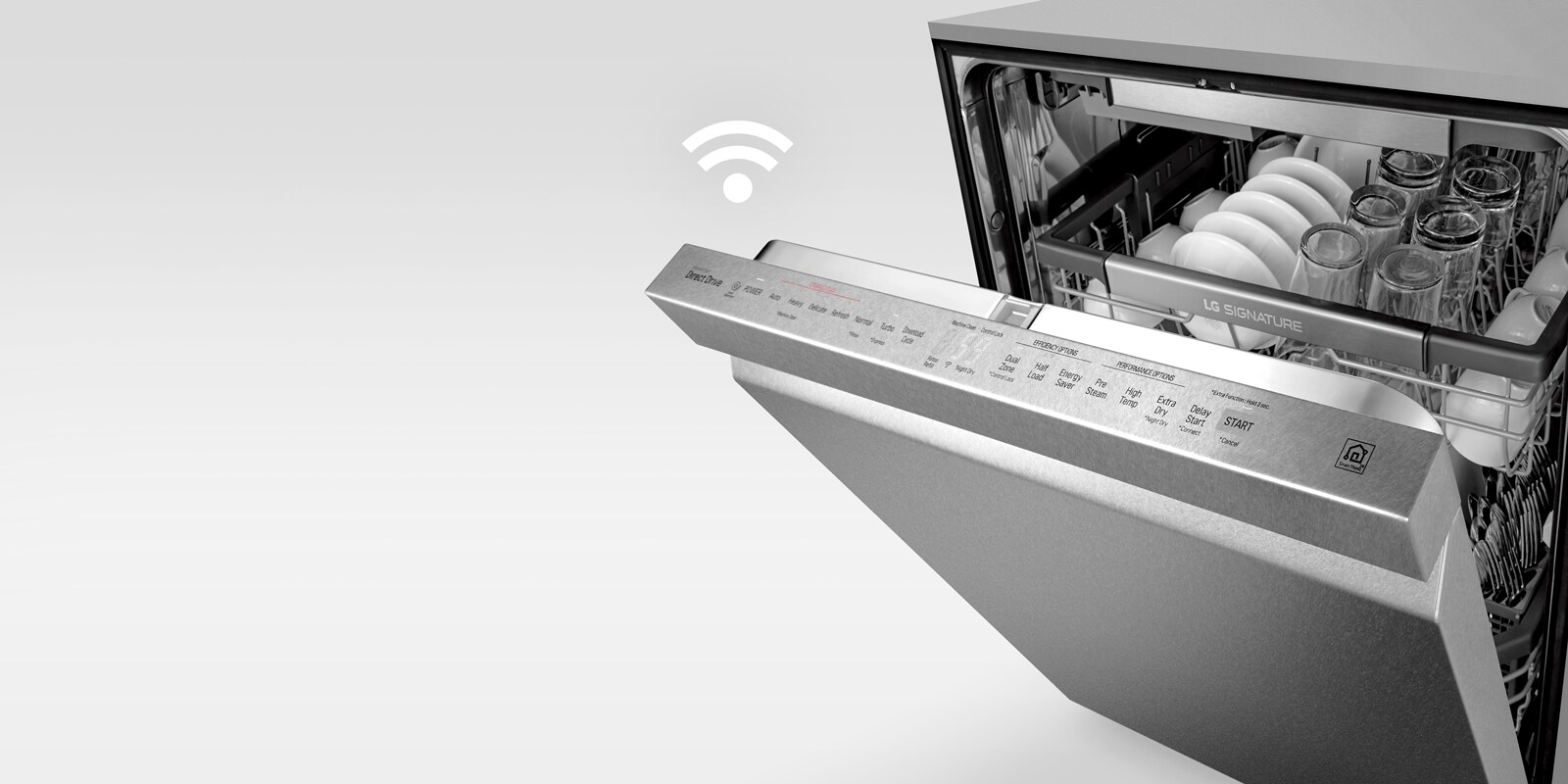
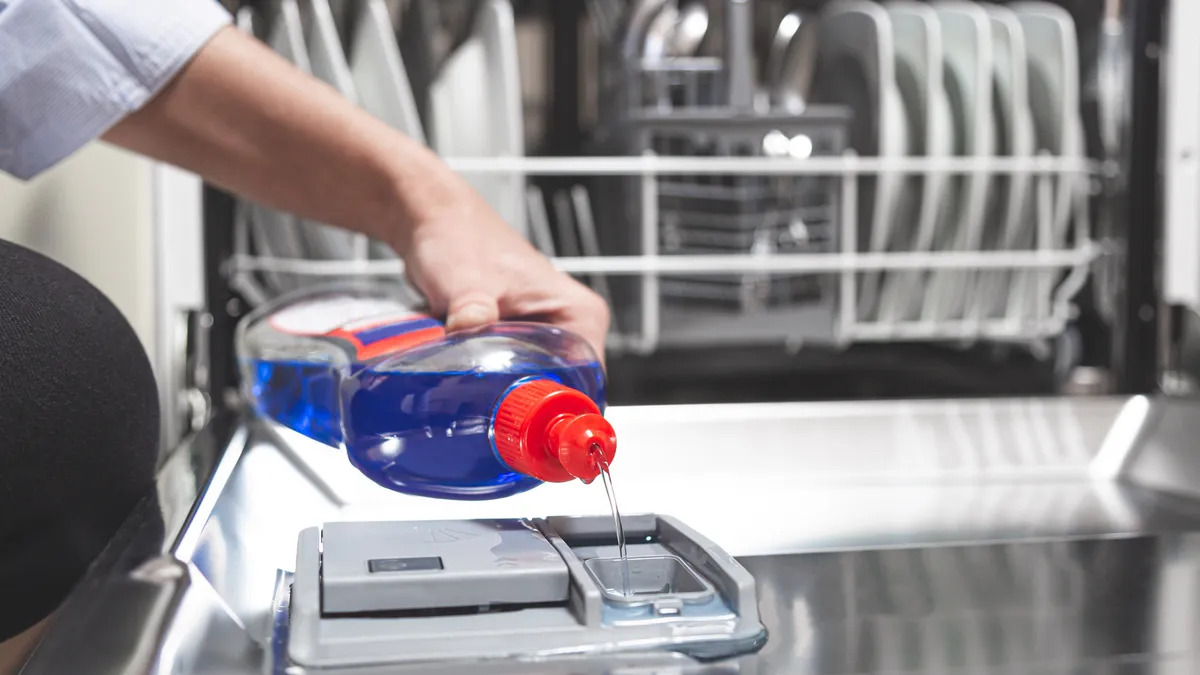
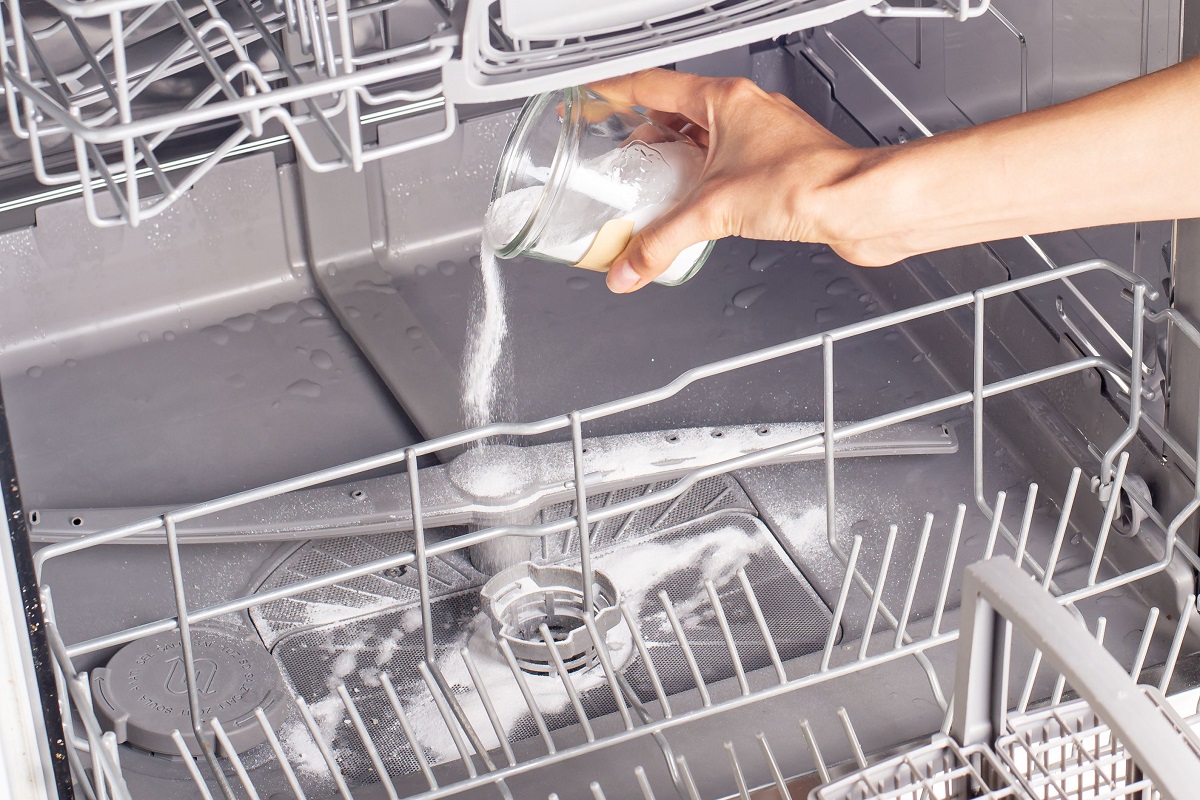

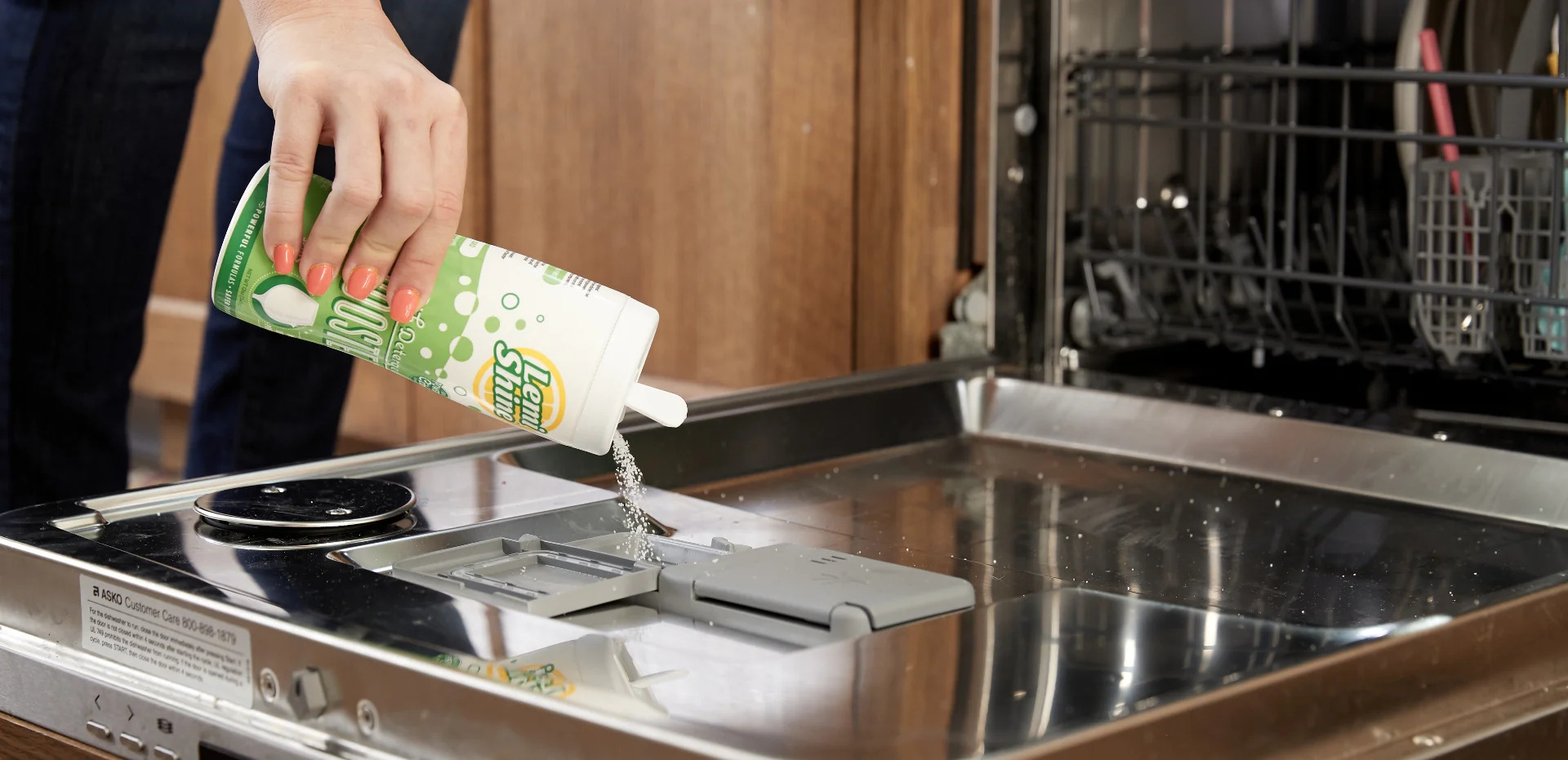
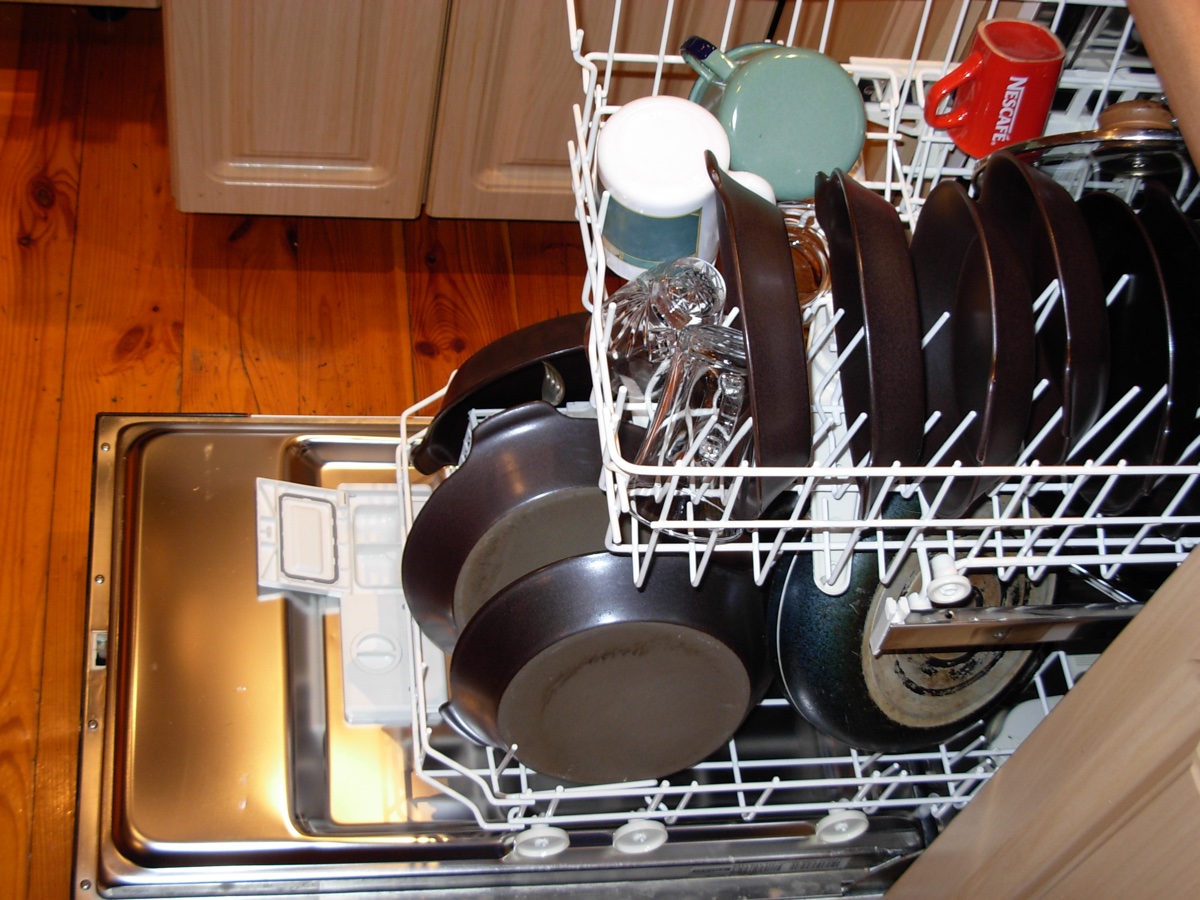
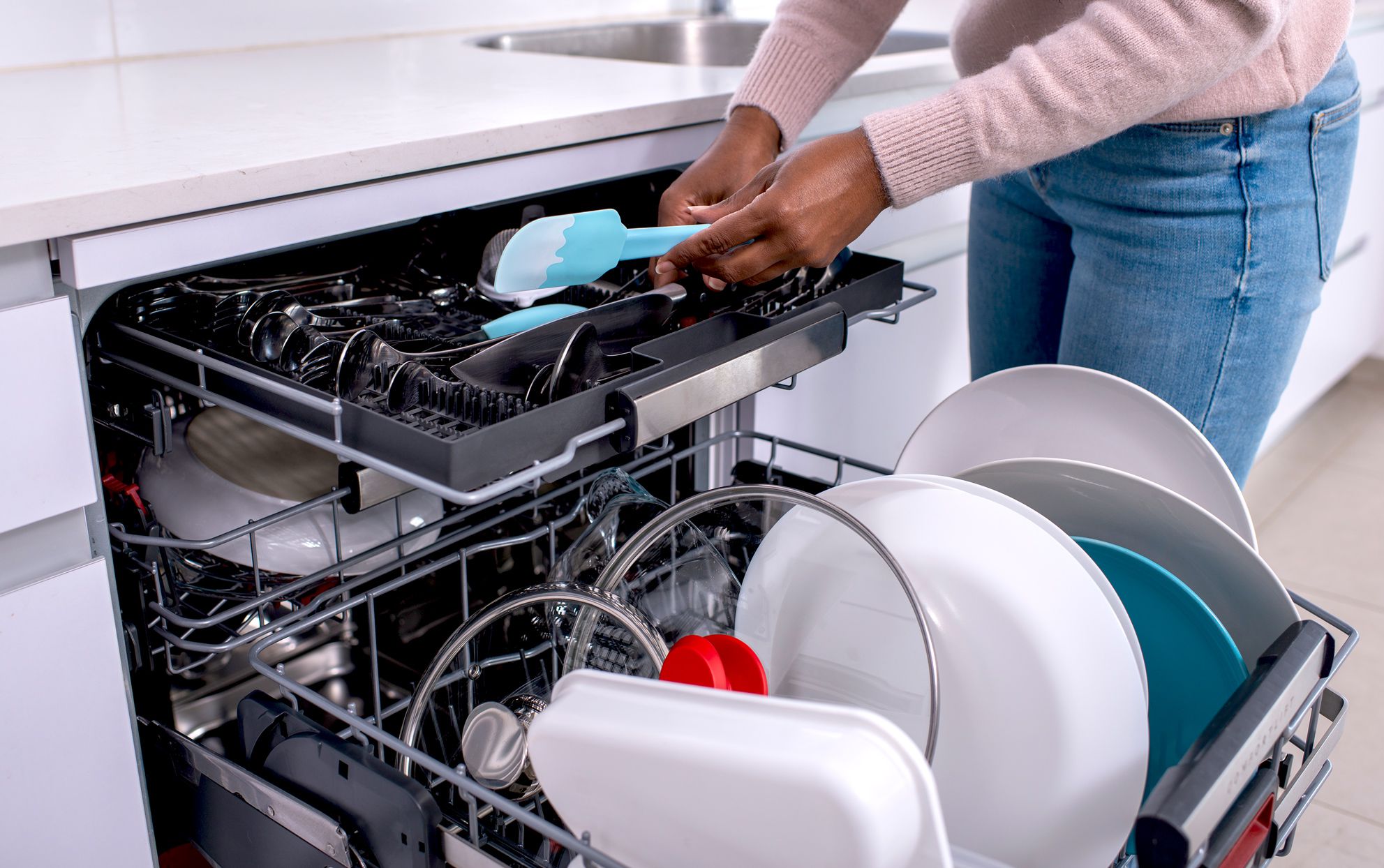
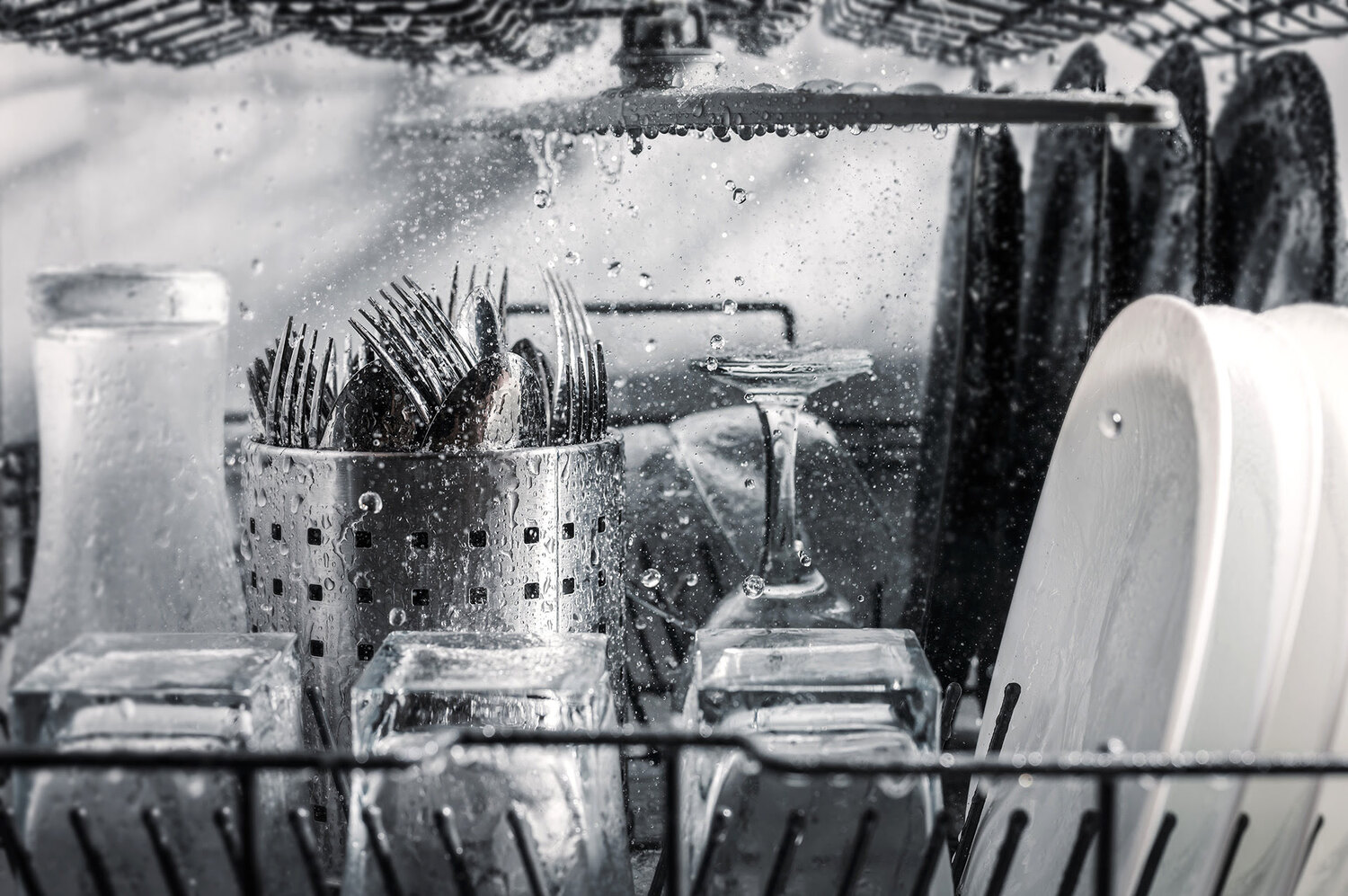
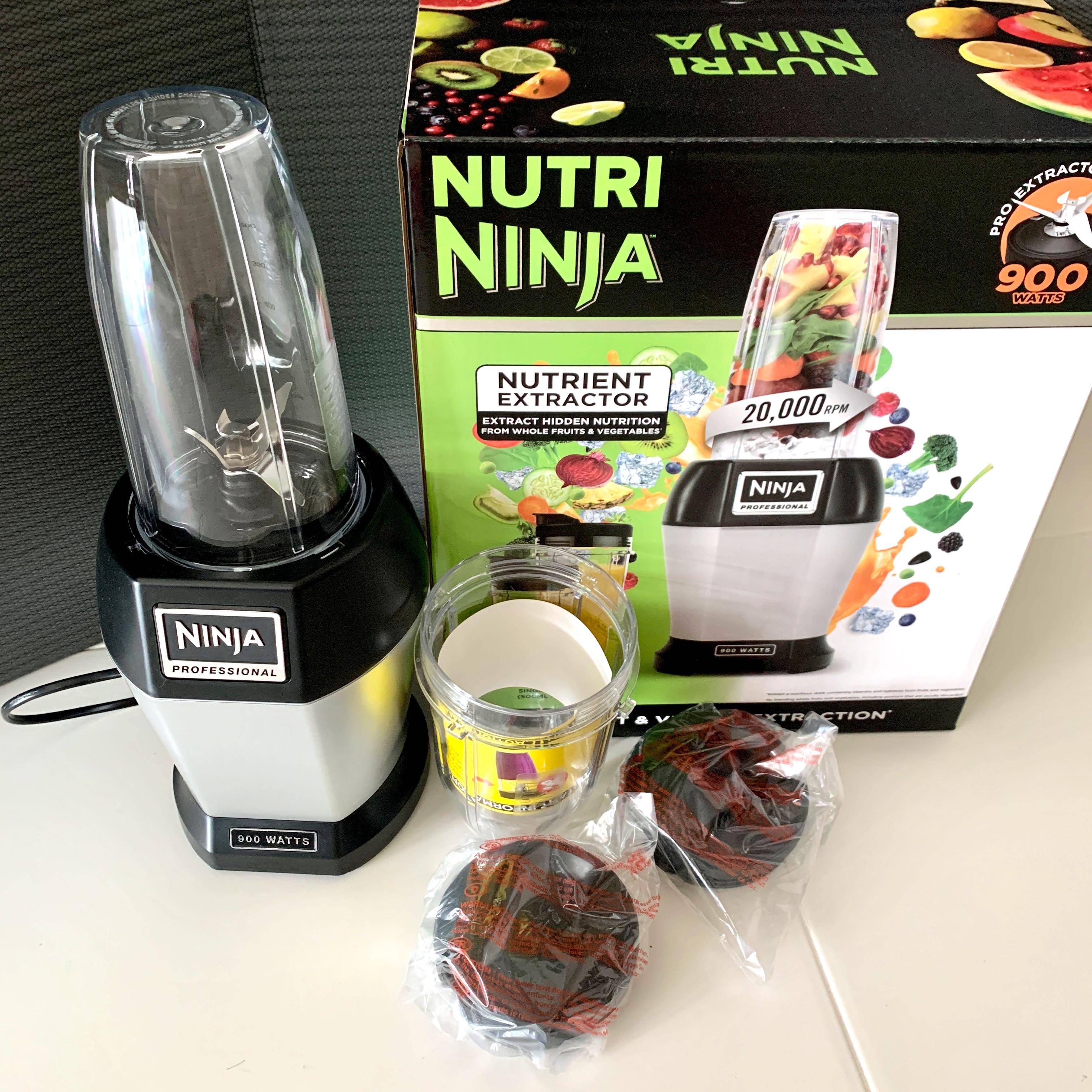
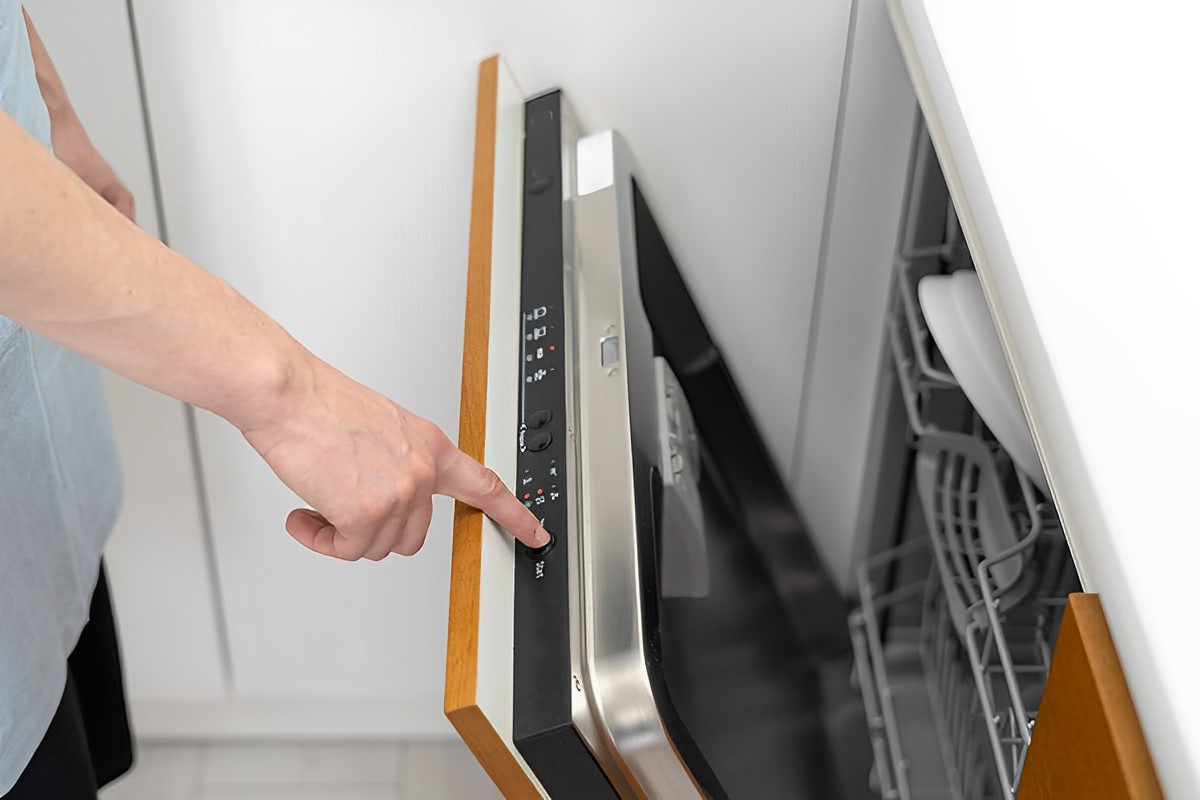

0 thoughts on “How To Use The Dishwasher”